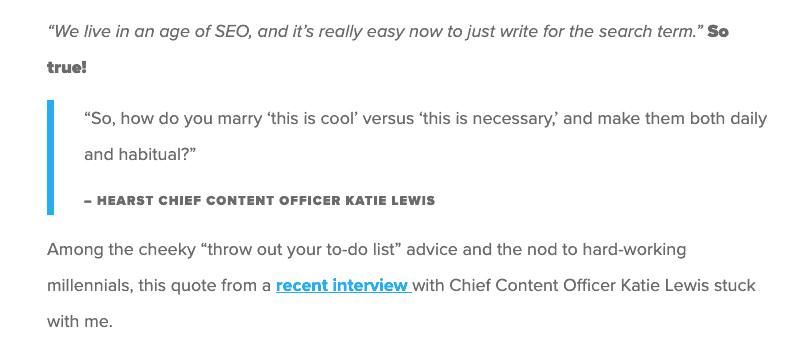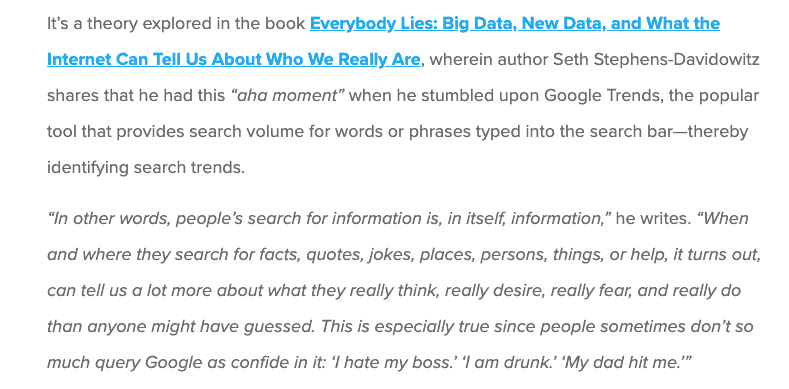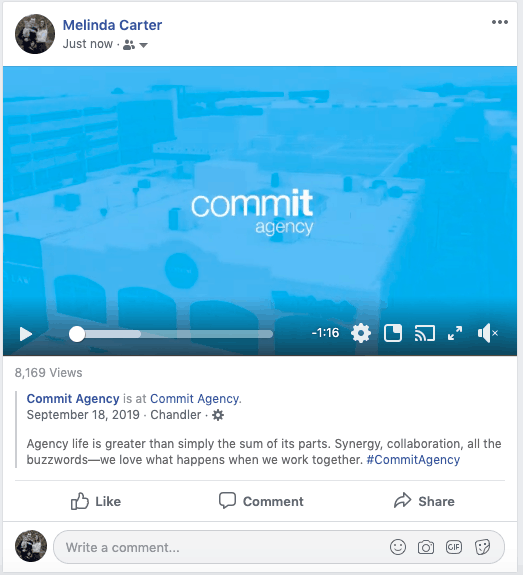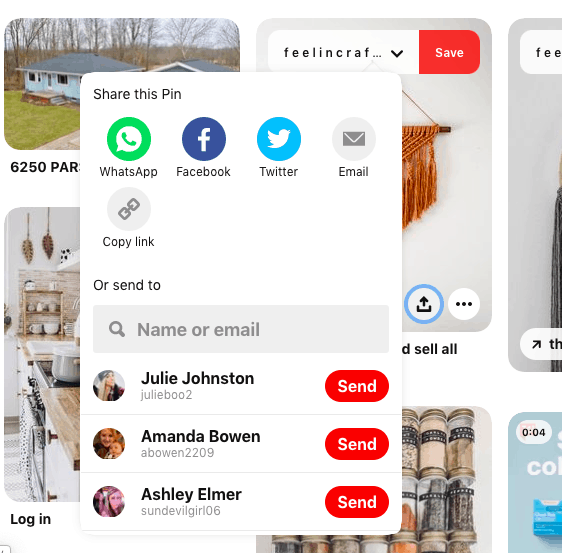The Correct Way to Cite Sources / Repost Content (in Blogs and on Social Media)
April 16, 2020
As a content writer at a marketing agency, I know how important it is to properly cite sources in our client’s blogs as well as social media posts. Not only does giving credit to the original author make them look good, but it also makes you look more credible.
There are many instances where you will need to cite your sources. For example, you will need to cite when:
- quoting someone else
- mentioning statistics that you didn’t conclude yourself
- using another person’s thoughts or ideas that aren’t your own
- reposting an image that you didn’t take
- inserting a visual or infographic that you didn’t create
Basically, for anything you didn’t write yourself, you’ll want to attribute it to whoever did.
How to Cite Sources In Your Blog
The most common way we cite our sources (whether it be an article or a website) within our blogs is by paraphrasing and hyperlinking back to the page where the information originated. You can see an example of how we did this from one of our recent blog posts below.

In this particular instance, we rewrote the information in our own words and made sure it was clear where we sourced it from. By mentioning and hyperlinking the website of the original source, we are giving them full credit and also adding validity to our statement.
When including a direct quote, you’ll want to make sure to include quotation marks, the author’s name, and a link to the article from which it was pulled.

As you can see from one of our previous blogs, we not only quoted Katie Lewis, but we also included the company she works for, her title, and linked the recent interview from which we found the quote.
If you are citing a book within your blog post, you will want to include the author, the title of the book, and their statement in quotation marks like the example below.

When in doubt, include as much information about the author as possible. It doesn’t hurt to over credit, but it does to under credit.
How to Cite and Repost On Social Media
Giving credit on social media is fairly easy to do across all platforms. The most common way to cite your sources on social media is by reposting original content. When you repost, all of the details should carry over (including the author’s name or username), so there’s little or no additional information you’ll need to provide to give proper credit.
In order to repost on some of the major social platforms, you’ll want to follow these guidelines:
To repost content on Facebook, simply click or tap on the “share” feature at the bottom of the post. A new confirmation window will pop up where you can add your own additional caption (or not) and press “post” once you’re ready to share it to your timeline.

Once you’ve clicked “post” you will see the original post (plus the author’s name) on your own timeline.

To repost–or retweet–on Twitter you can go about it a few different ways.
The most common way to repost someone else’s tweet is to retweet it. Similar to Facebook, just click or tap on the retweet button (it looks like revolving arrows) and it will post to your feed with the original author’s twitter handle and tweet. It looks like this:

If you plan on manually reposting someone else’s tweet, you can copy and paste the text into a new tweet and include “RT” at the end. It’s also best practice to tag the original author’s twitter handle either in the beginning or at the end of the tweet.
Although Instagram doesn’t have a repost option directly on their app, there are a few ways you can still repost while giving proper credit.
The first option is to download an Instagram reposting app. Repost for Instagram, Buffer, Instarepost, and DownloadGram are all available to download in the app store for iOS and Android. Each app involves about a four step process, so make sure to read over the directions carefully before you begin.
Another option is to repost manually. To do this, take a screenshot of the post you’re wanting to share and crop the image directly from your phone’s photo editing tool. If you’re copying their text too, make sure to tag their Instagram handle (ex: @commitagency) and use the hashtag #repost.
As a disclaimer, we always recommend reaching out to the content’s original owner for permission to repost their image. This can be done via the comments section of the specific post, or through direct message. Oftentimes you will get approval almost immediately, and if not, move on and look for another image to repost.
Pinterest is all about sharing and “pinning” ideas for later. Its users browse through the site for inspiration and “save” pins to their own creative boards to revisit later. To save a pin to your board, all you have to do is hover over the photo, make sure the correct board is highlighted, and click on the red “save” button in the top right corner. That’s it!
If you want to share the pin elsewhere, for instance on Facebook, you will need to click on the share icon located at the bottom of the post (it has an arrow pointed upwards with a bracket). This is what you will see after you click on it:

Once you’ve clicked on the Facebook icon, Pinterest will automatically populate your FB post and include a link to the original source so you don’t have to give any further credit.
To reshare content on LinkedIn, click “share” on the post you want to share. Under the “share to feed” tab, include the person or company you want to give credit to by starting off with the “@” symbol. Once you’ve tagged the person you wanted to mention, select who you want to share the post with and click post!

How to Repost Content On your Blog
Let’s say you come across a blog post that you didn’t write but you still want to share it on your site. It’s informational, well-written, provides plenty of compelling statistics, and aligns with your company’s brand messaging and image. You could try to replicate it in your own words, but doing so may sound too copy-cattish.
If you run into this instance, don’t get discouraged because we have some good news for you. There is a possibility that you could have that blog post live on your website without it being considered “stolen” or “duplicated content.”
It’s called content syndication, and it’s actually a pretty common practice. If done correctly, you and the original author will both benefit from the shared content.
The main takeaway we want you to know about syndicating content is that you will need permission to repost. Find a way to contact the author and ask if it’s alright to use their blog on your site. Once you’ve been granted permission, you’ll want to attribute the author and link to the original content at the top of the page so it’s clear that this content is not your own.

Above All: Avoid Using Other People’s Words As Your Own
Chances are, if you’re reading this blog post, you know it’s wrong to claim someone else’s words as your own. That’s called plagiarism, plain and simple, and it could get you into some big trouble. Sometimes it’s just a slap on the wrist, other times it could evolve into a costly mistake. Either way, we don’t want you to make the mistake of not giving credit where credit is due.
Struggling to come up with new content ideas for your next blog or social media post? We can help. Reach out to us today, we’d love the chance to show you our strategic creative side.




























